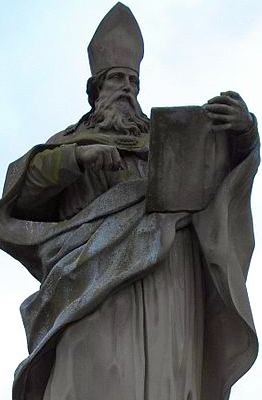Saint Bruno of Würzburg
(c. 1005 – 26 May 1045)
Also known as Bruno of Carinthia, he was imperial chancellor of Italy from 1027 to 1034 for Conrad II, Holy Roman Emperor, to whom he was related, and from 1034 until his death prince-bishop of Würzburg.
Bruno was the son of Conrad I, Duke of Carinthia, and Matilda of Swabia, and thus a cousin of the Salian Emperor Conrad II. He courted Agnes of Poitou on behalf of Conrad’s son and successor Emperor Henry III. He also accompanied Henry on his second Hungarian Campaign, during which Bruno died in an accident at Persenbeug on the Danube in the present Lower Austria.
The retinue of Henry III had stopped at the residence of Countess Richlinde of Ebersberg, who was faced with the task of distributing the estate of her recently deceased husband Count Adalbero II of Ebersberg. During a great banquet given by the countess a load-bearing pillar supporting the banqueting hall broke, causing the entire floor to collapse. The king was only slightly hurt but the countess, Bruno and Abbot Altmann of Ebersberg Abbey were so badly injured that they did not survive more than a few days. The Annals of Niederaltaich add a legend to the story: before the feast, at the Strudengau on the Danube near Grein, the devil was supposed to have appeared to the bishop and threatened him already, but the bishop was able to repel him. Bruno’s body was returned to his residence in Würzburg.
 Many cathedrals were built in that period, and from 1040 Bruno began the construction of Würzburg Cathedral. The consecration of the crypt on 16 June 1045 was combined with his burial. Bruno was not formally canonized by the Roman Catholic Church, but is nevertheless revered as a saint.
Many cathedrals were built in that period, and from 1040 Bruno began the construction of Würzburg Cathedral. The consecration of the crypt on 16 June 1045 was combined with his burial. Bruno was not formally canonized by the Roman Catholic Church, but is nevertheless revered as a saint.
Bruno wrote a well-known commentary on the Psalms, to which he appended an analysis of ten Biblical hymns, consisting of extracts from the writings of the Church Fathers.






